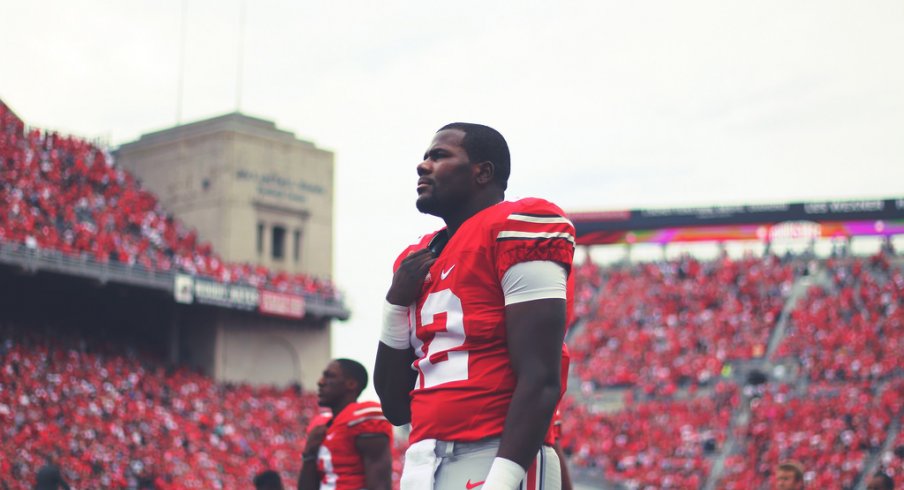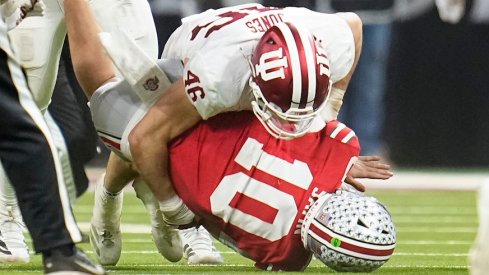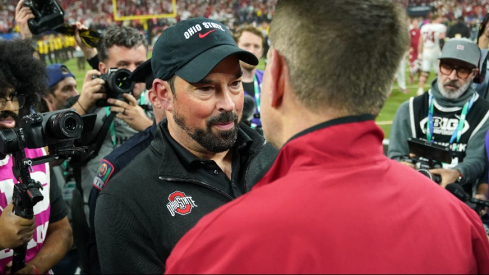Early in the fourth quarter of last Saturday's game against Western Michigan, Ohio State’s offense had 1st-and-15 near midfield when quarterback Cardale Jones fielded a snap out of the shotgun, dropped back to pass and let one fly toward the end zone.
Sophomore H-receiver Curtis Samuel had his man beat by a couple steps and, had the pass been completed, would have scored a walk-in touchdown. Samuel had to slow down his route, though, as the pass from Jones was severely underthrown. That delay allowed Western Michigan safety Rontavious Atkins to catch up to Samuel and break up the pass.
It was a missed opportunity for a big play for Ohio State’s offense and, more specifically, for Jones to have a big strike in the passing game. This was a recurring theme for the Buckeyes against the Broncos, too. Jones missed on a handful of deep passes which, had they not been underthrown, would have been touchdowns.
“Of course it’s on me,” Jones said following the game. “You gotta go back and watch and every underthrown ball, the receiver had a guy beat by a decent amount of yards. They were easy layups.”
On Monday, during Urban Meyer’s weekly press conference, Ohio State’s head coach echoed the same sentiments as his quarterback.
“We had about five, I want to say, at least six underthrown deep balls which is very uncharacteristic of our quarterbacks,” Meyer said. “That’s something that we’re going to work extremely hard on.”
“I think we’re real close. We had some underthrows and some drops, but this week and the weeks coming, when we prepare we’ll get the timing back and the trust back between each other. We’ll be all right.”– Jalin Marshall
The underthrows on the deep balls, Meyer said, are fixable. But they kind of served as a microcosm for the Buckeyes’ offense thus far through the first four games of the season. It’s a minor detail — throw them just a few yards farther and there are a few more touchdowns on the board — but it’s what has caused Ohio State’s lack of explosion on offense.
Whether it be the blocking of the offensive line, the blocking on the perimeter, wide receivers not creating enough separation (this wasn’t the issue against Western Michigan) or an underthrow or misread by the quarterback, something has been just a little bit off.
Ohio State feels it is not too far away from correcting these minor things, though, and getting back on track.
“I think we’re real close,” redshirt sophomore wide receiver Jalin Marshall said. “We had some underthrows and some drops. … But this week and the weeks coming, when we prepare we’ll get the timing back and the trust back between each other. We’ll be all right.”
The Buckeyes are averaging 436 yards and 34.5 points per game — both in the top half of the Big Ten — through one-third of the season, so it’s not like the offense has been poor. But it certainly hasn’t been as explosive and dynamic as it was last season, especially toward the end of the year.
That comes with time, though. There are new players and new coaches that are still getting used to playing with each other.
And after back-to-back underwhelming performances in Weeks 2 and 3, the Buckeyes feel they took a significant step in the right direction in Saturday’s 38-12 win over Western Michigan. Now, for Ohio State, it’s about correcting minor details in order to get that explosive offense back on track.
If those corrections come, the big plays — in both the running and passing game — will follow.
“Obviously against Hawai’i and Northern Illinois our offense wasn’t where we wanted it to be,” senior offensive tackle Taylor Decker said. “But I think with this past week we kind of got it back on track and we’re just going to have to improve game to game because as we go deeper and deeper we’re going to be facing tougher teams.”
“Then, when it comes November and it’s time to compete for a championship, that’s when we have to be at our best and our highest capacity,” Decker continued. “It’s just going out there, going back to work and improving. Taking baby steps.”


